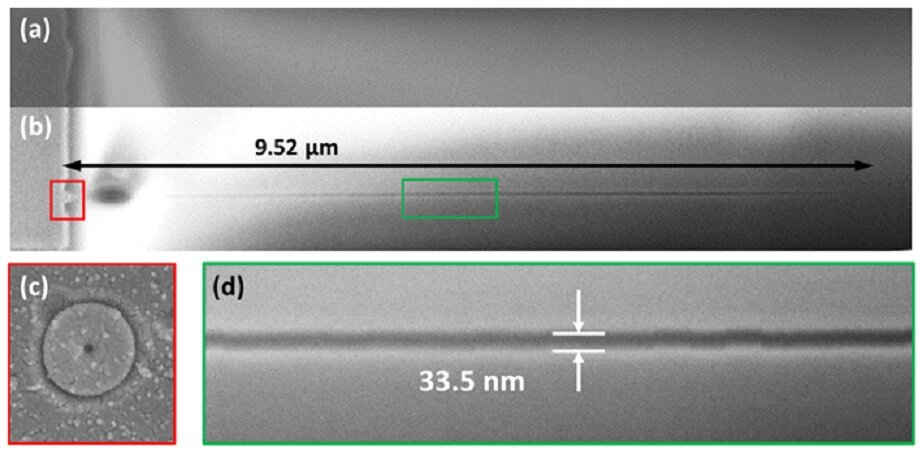Recent progress in the fabrication of nanostructures has led to their application in numerous fields, including materials engineering, environmental remediation, biomedicine, and more. In particular, nanostructure nanochannels with at least one physical dimension smaller than 100 nm are actively studied for their potential use in DNA stretching, nanofluidics, and artificial membranes.
For example, in traditional DNA testing methods based on polymerase chain reaction, a single mutated gene is easily treated as noise. Inside nanochannels with sub-100-nm diameter, the DNA molecule can be stretched along a line. As a result, it is possible to investigate the base pairs one-by-one along a single DNA, through which the single mutated gene can be precisely discovered.
Most applications fields would benefit from nanochannels made on hard and brittle materials, such as silica, diamond, and sapphire, which offer high chemical stability and durability in harsh environments. Unfortunately, fabricating deep nanochannels on such materials is challenging — so far, only superficial nanochannels via lithographic techniques have been widely and successfully reproduced.
Now, using femtosecond laser direct writing (FLDW) for nanostructure fabrication, researchers at Xi’an Jiaotong University created silica nanochannels with a diameter of 30 nm, smaller than reported in any previous study, and with an aspect ratio of over 20. FLDW is considered a promising technology for nanostrucutre fabrication. The technique uses extremely short — 10−15 s — and energetic laser pulses with high precision to create desired nanostructures. These structures include nanoholes, nanopores, and nanoslits.
In the work, team members focused a single Bessel beam pulse of 515 nm, which was acquired from a 1030-nm laser through frequency doubling, at just the right distance from the surface of a silica sample. A few experiments with different laser pulse energies and sample distances then showed impressive results. Under low pulse energy, depending on the sample distance, a 30-nm size nanochannel or a pure crater structure was discovered close — less than 1 μm — to the silica surface. Under high pulse energy, a much longer cavity would form deep inside — 5 μm below — the bulk of the material with a crater on the surface at the same time.

Surface and side views of a sample showcasing a nanochannel with a length of several microns and a diameter well below 30 nm, implying a very high aspect ratio (>200). Courtesy of Advanced Photonics Nexus (2022). DOI: 10.1117/1.APN.1.2.026004.
After theoretical analysis and simulation, the team realized that a hitherto-unobserved laser-material interaction was at play, which the team calls “surface assisting material ejection.” In this process, the removal of superficial material opens a window for the expansion and ejection of gasified material deep within the bulk of the material with a crated on the surface at the same time.
The team attributed its successful demonstration in this research to the novel laser-matter interaction phenomenon.
“This work provides novel insights into the fundamentals of laser interaction with matter,” said Paulina Segovia-Olvera, associate editor of the journal Advanced Photonics Nexus, who was not an author of the study. “It demonstrates that it is possible to fabricate nanochannel structures with dimensions well below the diffraction limit, which typically sets the lower limit on the nanostructure feature size for traditional laser-based fabrication.”
Given this advancement in knowledge, this study paves the way for the adoption of FLDW as a robust, flexible, and cost-effective method for fabricating nanochannels with submicron precision. In turn, this can help advance its application in other areas, such as genomic science, catalysis, and sensors.
The research was published in Advanced Photonics Nexus (www.doi.org/10.1117/1.APN.1.2.026004).